Trump and Putin meet under a nuclear cloud
By Grace Vedock | July 12, 2018
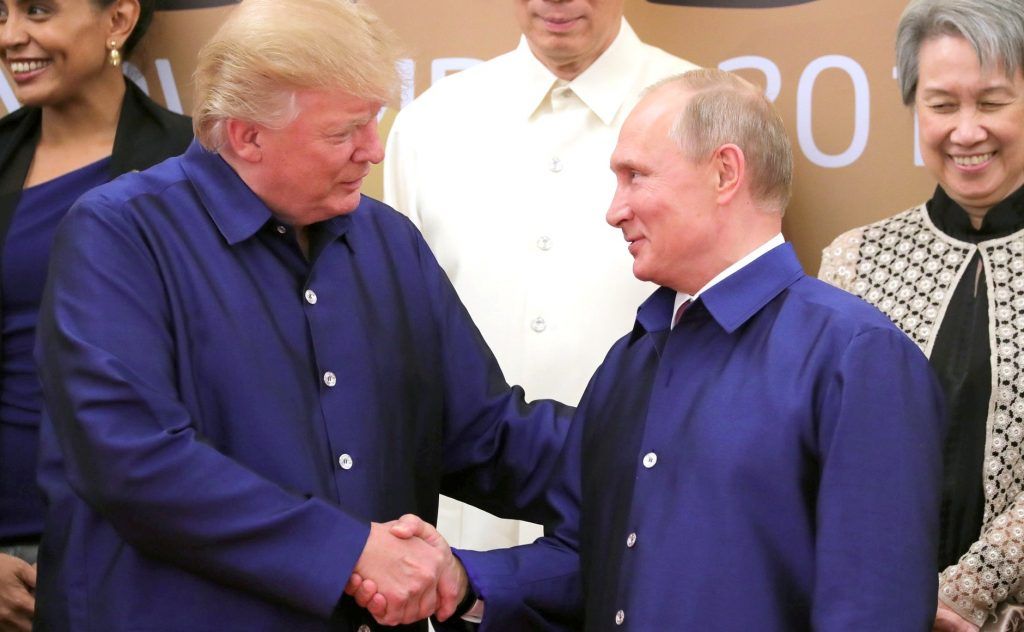 Presidents Trump and Putin met briefly at the November 2017 Asia-Pacific Economic Cooperation (APEC) meeting in Danang, Vietnam. Credit: Kremlin Presidential Executive Office
Presidents Trump and Putin met briefly at the November 2017 Asia-Pacific Economic Cooperation (APEC) meeting in Danang, Vietnam. Credit: Kremlin Presidential Executive Office
In a few days, US President Donald Trump will meet with Russian President Vladimir Putin in Helsinki. Media coverage will undoubtedly highlight Russian meddling in the 2016 US presidential election, but it would be remiss not to discuss the nuclear implications of the Trump-Putin summit as well.
Kto vinovat? (Russian for “who is to blame?”) – that is the question being posed by just about everyone who is concerned with the current state of affairs between the United States and Russia.
In his most recent state of the union address, Putin boasted of warheads capable of evading US missile defenses, aired a spectacularly flashy, cartoon-esque animation of warheads striking Florida, and even asked Russians to name the new weapons. That’s a far cry from the wider-eyed, newly inaugurated Putin who 18 years ago promised US President George W. Bush that “Russia is ready” for aggressive nuclear disarmament. How did the situation become so dire in the intervening years?
The answer is far more complicated than one might expect. Laden with jargon, the process of bilateral denuclearization is difficult for the average person to comprehend, though it is a problem about which the average person should care. The weakening of US-Russian nuclear cooperation over the past two decades means that American and Russian nuclear weapons pose a growing threat to global security.
A new Cold War? Nuclear diplomacy and security concerns did not dissolve alongside the Soviet Union in 1991. Technological advancement, “great power” competition, and the sheer number of nuclear weapons deployed by both sides make the arms-control debate just as relevant today as it was during the Soviet century.
All too often, the importance of a comprehensive, cooperative nuclear dialogue is drowned out by sexier (or more scandalous) news. Former Ambassador to Russia Michael McFaul pointedly describes the current state of affairs not as a new Cold War, but as Hot Peace. Whereas the Cold War never resulted in overt military conflict (in the nuclear sense, at least), the current period of relative peace is fraught with cybersecurity threats, deteriorating diplomatic dialogue, and most importantly, a more acute nuclear threat.
As the world’s largest possessors of nuclear weapons and as key architects of the Nuclear Non-Proliferation Treaty – the framework of global nonproliferation since the 1970s – the United States and Russia have an inherent responsibility to present a unified front against the proliferation of nuclear weapons.
Limited resources post-collapse. Putin, a previously unknown face in Russian politics when he was first elected president, inherited the post-Soviet economic crisis that plagued the Boris Yeltsin presidency. Putin’s “economically driven” analysis of foreign and security policy stemmed from bitter fiscal realities. The sudden transition from a centrally planned economy to a market economy plunged Russia into an inflation-riddled tailspin, allowing the Kremlin’s cronies to consolidate economic and political power.
Russia could not compete with prosperous Western economies, so Putin opted to cooperate with the United States. This included “de-emphasizing” the centrality of nuclear weapons to Russia’s security, in part because the country did not have the finances required for the upkeep of an expansive Soviet nuclear arsenal.
Direct confrontation was not a luxury that Putin’s first term afforded him. Instead Russia went along with the expansive Nunn-Lugar Cooperative Threat Reduction (CTR) Program – also known as the Nunn-Lugar Act – signed into law by President George H. W. Bush. Nunn-Lugar began the arduous process of dismantling and destroying weapons of mass destruction in the former Soviet Union through a variety of programs. CTR programs successfully removed nuclear warheads from Belarus, Ukraine, and Kazakhstan; addressed post-Soviet “brain drain” by employing Soviet technicians; secured Russian warhead facilities and fissile materials from terrorist acquisition; and established transparency measures between the United States and Russia. CTR programs, though helpful, were limited in scope.
The George W. Bush years. Throughout the 1990s, Russia’s stance toward NATO was adversarial, particularly regarding NATO expansion and NATO’s military involvement in the Balkans. But in the post-9/11 period, a renewed focus on terrorism detracted from old rivalries and introduced new ones. The George W. Bush administration’s “War on Terror” presented newly minted President Putin with a unique opportunity to collaborate with the United States. After all, joint work implies equal status of the two powers. Putin was the first foreign leader to phone Bush after the 9/11 attacks and to offer logistical support – terrorism was an all-too-familiar ill in Russia, which had been fighting Islamic insurgents in Chechnya since the 1990s.
This amicable cooperation did not carry over to nuclear policy. Calling the 1972 Anti-Ballistic Missile Treaty a “relic of the Cold War,” the Bush administration announced its intention to withdraw from the treaty in 2001 – a move that Putin deemed a “mistake.” The failure of the Bush and Putin camps to find a diplomatic resolve clearly frustrated Putin, who seemed committed to discussing and modifying the treaty. Renowned Kremlinologist Andrew C. Kuchins described Bush’s withdrawal as a “bitter psychological pill that the Russians had to swallow.”
The Bush administration tried its hand at treaty negotiation in 2002 with the Strategic Offensive Reductions Treaty (SORT), a paltry three-page document lacking verification measures guaranteed only by the 1991 Strategic Arms Reduction Treaty (START), which was set to expire in 2009. SORT embodied the Bush administration’s belief that US-Russian bilateral action need not be hindered by formal, complex treaties with extensive restrictions. SORT was rightly criticized for lacking clear reductions standards and verification measures; as then-Secretary of State Colin Powell testified to the US Senate, “the treaty will allow you to have as many warheads as you want.”
When Putin proposed in 2006 that the United States and Russia begin talks about replacing START, experts described the Bush administration as “reluctant to engage,” not seeing the value in such a treaty. START prohibited significant modernization of Russia’s nuclear program – SS-18 and SS-19 type ICBMs were set to be retired by 2020, which would render the Russian nuclear force much smaller than its American counterpart. In turn, Russia might try to deploy warheads on its SS-27 silo- and mobile-based ICBMs (an action prohibited by START). The expiration of START would allow the Russians to quickly capitalize on a newfound freedom to deploy strategic warheads.
The Bush administration’s sustained skepticism of international agreements undermined the very nature of arms-control treaties, which form the foundation of the global nonproliferation regime. As Kuchins put it, “one may reasonably assert that US-Russian relations have improved in spite of rather than because of Bush administration policies.”
Obama-era optimism. When Bush exited the Oval Office in 2009, he passed the million-dollar question of START expiration on to his successor. What to do with START was highly contentious, particularly how to account for vast technological advancements since the treaty was signed in 1991. By 2009, the United States had invested at least $10 billion in Cooperative Threat Reduction programs, and a new treaty guaranteeing verification measures and deployed-missile reductions was desperately needed to preserve the successes of START.
In the realm of terrorism, Russia continued to cooperate with the United States, opening airspace to US troops entering Afghanistan in 2009. The so-called Northern Distribution Network in Central Asia disproportionately relied on transit lines through Pakistan, so the Russian announcement was a boon to the Pentagon and an optimistic indicator of US-Russian cooperation.
President Barack Obama’s 2009 speech in Prague – during which he called for a “world without nuclear weapons” – coupled with his negotiations with a more lenient Russian president, Dmitry Medvedev, revived the previously far-fetched possibility of a nuclear-free world. One year later, both presidents returned to Prague to sign New START, which required the reduction of strategic forces to 1,550 deployed strategic warheads for each country. It also required reductions of deployed intercontinental ballistic missiles, submarine-launched ballistic missiles, and nuclear-armed heavy bombers to 700; established counting rules for deployed missiles, re-entry vehicles, launchers, and delivery vehicles; and established an expansive verification regime.
Though critics were quick to point out the hefty price tag of $80 billion for modernization programs over the next decade, the treaty ultimately passed the US Senate with 71 votes. With the new treaty, the Cold War-era rivalry between the United States and Russia, and the increasingly resistant Putin of the early 2000s, seemed a “relic of the past” by 2012.
The Obama administration expended significant political capital on Senate ratification of New START, however, leaving little willingness in Congress for further arms control agreements. For example, Obama was unable to obtain passage of the Comprehensive Test Ban Treaty, which was adopted by the United Nations General Assembly in 1996 but failed ratification in the US Senate in 1999, and to this day remains signed but not ratified.
One of the Obama administration’s arguments for the ratification of New START was its necessity for future arms-control agreements. Unlike START, however, New START had no “agreed agenda” for follow-up negotiations, and attempts by the Obama administration to initiate further reductions in 2011 and 2013 fell flat.
During Obama’s second term, tensions between the United States and Russia exponentially increased due to a number of events related and unrelated to nonproliferation, but nonetheless detracting from any productive nuclear dialogue. In Russia, returning President Putin became increasingly paranoid about alleged US sponsorship of popular uprisings known as “color revolutions.” He annexed Crimea in 2014, in a startling continuation of neo-imperialist invasions of Georgia, South Ossetia, and Abkhazia. That same year, Russia joined Brazil, India, China, and South Africa in an economic cooperative to counter Western economic hegemony. Also in 2014, the United States accused Russia of violating the INF Treaty by deploying a prohibited ground-launched missile. The annexation of Crimea led to the expulsion of Russia from the G8, the launch of a NATO rapid reaction force to counter Russian aggression in Ukraine, and a US Congress vote in 2015 to defund US denuclearization efforts in Russia — effectively ending most aspects of US-Russian nuclear security cooperation.
Looking forward. With the Trump-Putin summit approaching, I hope that the Pentagon and the White House have a well-formulated plan to mitigate tensions between the United States and Russia without losing significant ground vis-à-vis nuclear cooperation. Trump’s options remain open – even without Russian cooperation, the United States could unilaterally reduce deployed nuclear weapons while still maintaining domestic security.
Lest the president find himself in a Mark Twain-esque “history doesn’t repeat itself but it often rhymes” situation, the current administration should learn from the mistakes and build on the successes of the past two administrations. Washington should be willing, eager, and persistent in holding both itself and Moscow to the lofty promises of the Nuclear Non-Proliferation Treaty and Obama’s Prague speech. Though the notion may seem naïve, a more engaged and informed public could expedite the complicated but nonetheless virtuous process of creating a world without nuclear weapons.
Together, we make the world safer.
The Bulletin elevates expert voices above the noise. But as an independent nonprofit organization, our operations depend on the support of readers like you. Help us continue to deliver quality journalism that holds leaders accountable. Your support of our work at any level is important. In return, we promise our coverage will be understandable, influential, vigilant, solution-oriented, and fair-minded. Together we can make a difference.
Share: [addthis tool="addthis_inline_share_toolbox"]

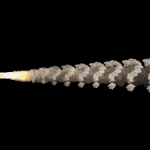
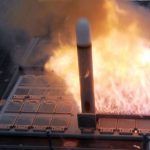
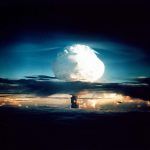
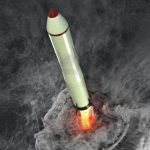
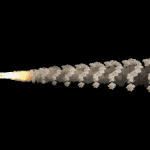
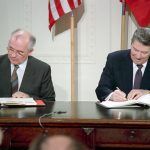








I remember that “Post Soviet”era when Russia first emerged in an extremely vulnerable position. Today the Russian state is vastly stronger, more stable and much more resourceful. Old assumptions that used to be taken for granted, no longer apply. Arms control pundits used to say things like “Russia can’t afford to deploy more than 3 or 4 missiles per year”. Today they are deploying new mirv equipped missiles(the US tried to ban mirvs under “Start” but the Russians weren’t having it) at nearly ten times that rate. In fact, they are in the advanced stages of nuclear “modernization” that has… Read more »